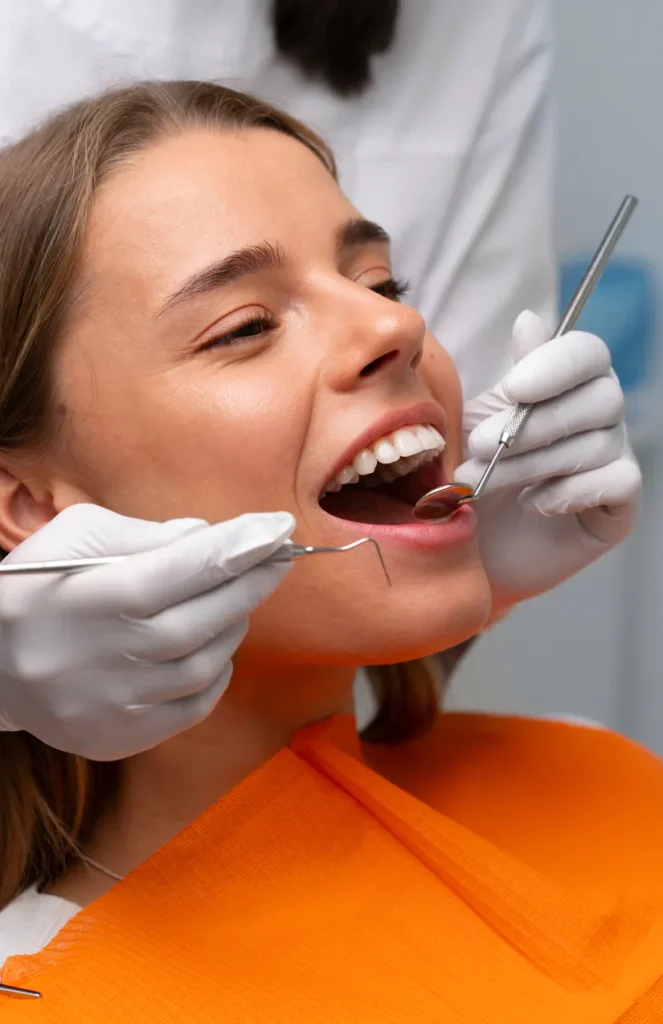When you sit down in the dentist’s chair, your dentist and your dental hygienist are looking at a number of things inside your mouth. In addition to the health of your teeth, they’re also checking your gums. If your gums recede, the roots of your teeth can become exposed, leading to a whole host of problems. Which can range from sensitivity to temperature changes to root decay, tooth loss. There are a number of factors can lead to receding gums, from gum disease to hormonal changes, to aggressive brushing, to root splintering. A gum graft can replace lost gum tissue to prevent further loss and often recover exposed roots. What can you expect after your gum graft is complete?
Recovery Time
For the most part, patients can drive themselves home after a gum graft. Local anesthesia (novocain) is typically used to numb the areas where the procedure takes place. In some cases, patients opt for a sedative. In this case, transportation will need to be arranged to travel home from the dentist’s office. The surgical area will normally be tender for one to two days. Tissue for the gum graft is often taken from your palate but may be obtained from other sites or be ‘store bought’ in the form of manufactured collagen. This area takes one to two weeks to heal. While it’s recommended that patients refrain from strenuous physical activity or exercise for 24 hours following the surgery, most patients find that they can return to their usual activities, such as work, the next day.
Pain
The area of the gum graft will be tender for a day or two, and sensitive to hot or cold drinks and hard foods for a several weeks afterward. If the graft is from the roof of your mouth, patients typically describe the pain as similar to a hot pizza burn- but this can be avoided with closure of the donor site and coverage of the palate with a mouth guard. Over-the-counter pain medications will usually suffice for managing the pain, but it’s always a good idea to check with your dentist before taking anything. While it can be tempting to maneuver your mouth and lips to try to get a better view of the surgical area, it’s best to avoid doing so, as this can cause unnecessary pain.
Eating and Drinking
It’s imperative that smoking, tobacco use of any kind, and alcohol are avoided until your mouth has healed, as these will interfere with the healing process. It’s also important to avoid hot drinks, and hot and hard foods at the surgical site. All of this can aggravate or hurt the surgical area. The ideal post-gum-graft diet consists of soft foods. Eggs, yogurt, and mashed or cooked-until-soft vegetables are all good things to have in the house. And of course, this is a great time to indulge in items like pudding, gelatin, and ice cream. And after a couple of days you can chew a harder diet on the opposite side
Cleaning and Maintenance
If you notice bleeding immediately after the surgery, it’s okay to place gauze on either side of the gum graft, but avoid putting the gauze directly on the surgical site. It can be better to apply a wet tea bag near the graft site as the tannic acid in the tea coagulates the blood. Brushing and flossing must be avoided in the surgical area until it has completely healed. To keep the area clean during that time, your dentist will recommend an antimicrobial mouthwash, along with guidelines for use.
A few weeks of care and caution go a long way. Following a gum graft, patients will experience less pain in their teeth and will have an overall healthier mouth. For more information on gum grafts and other dental procedures, call Specialty Dental Care in Omaha, NE at 402.334.8083.


